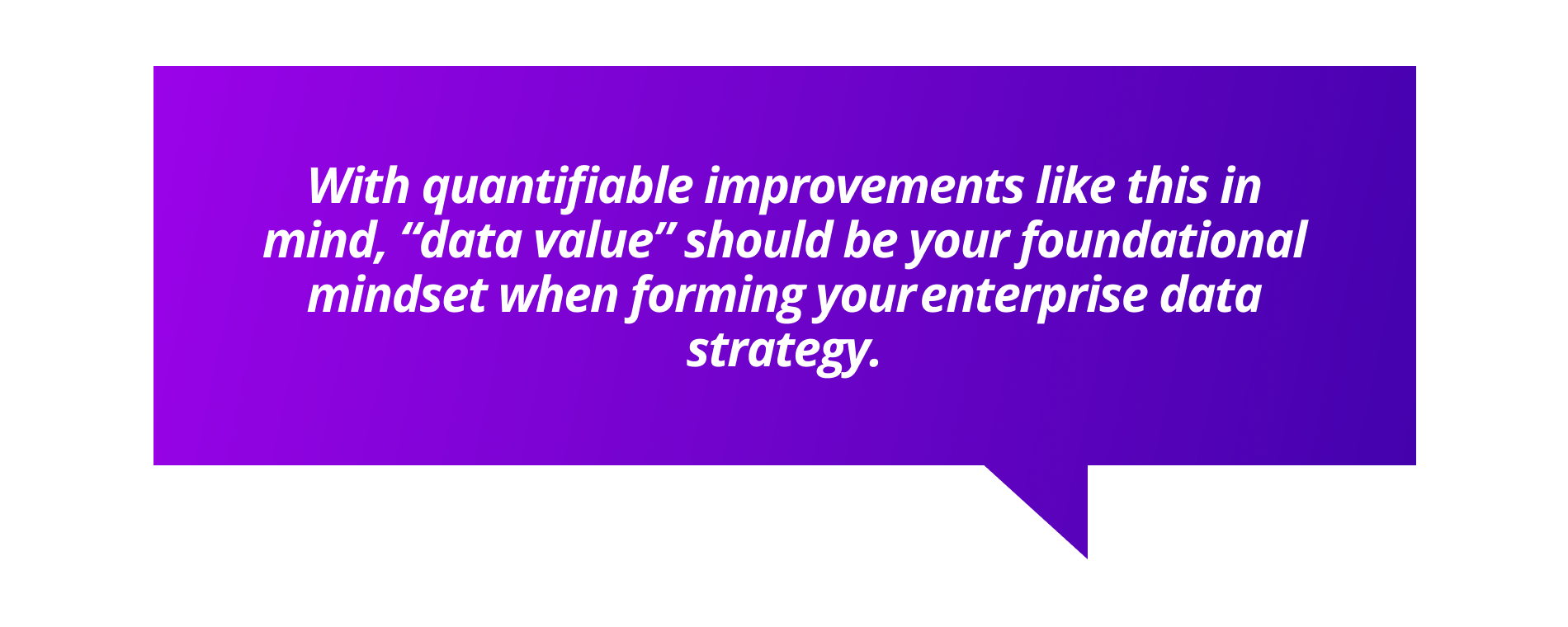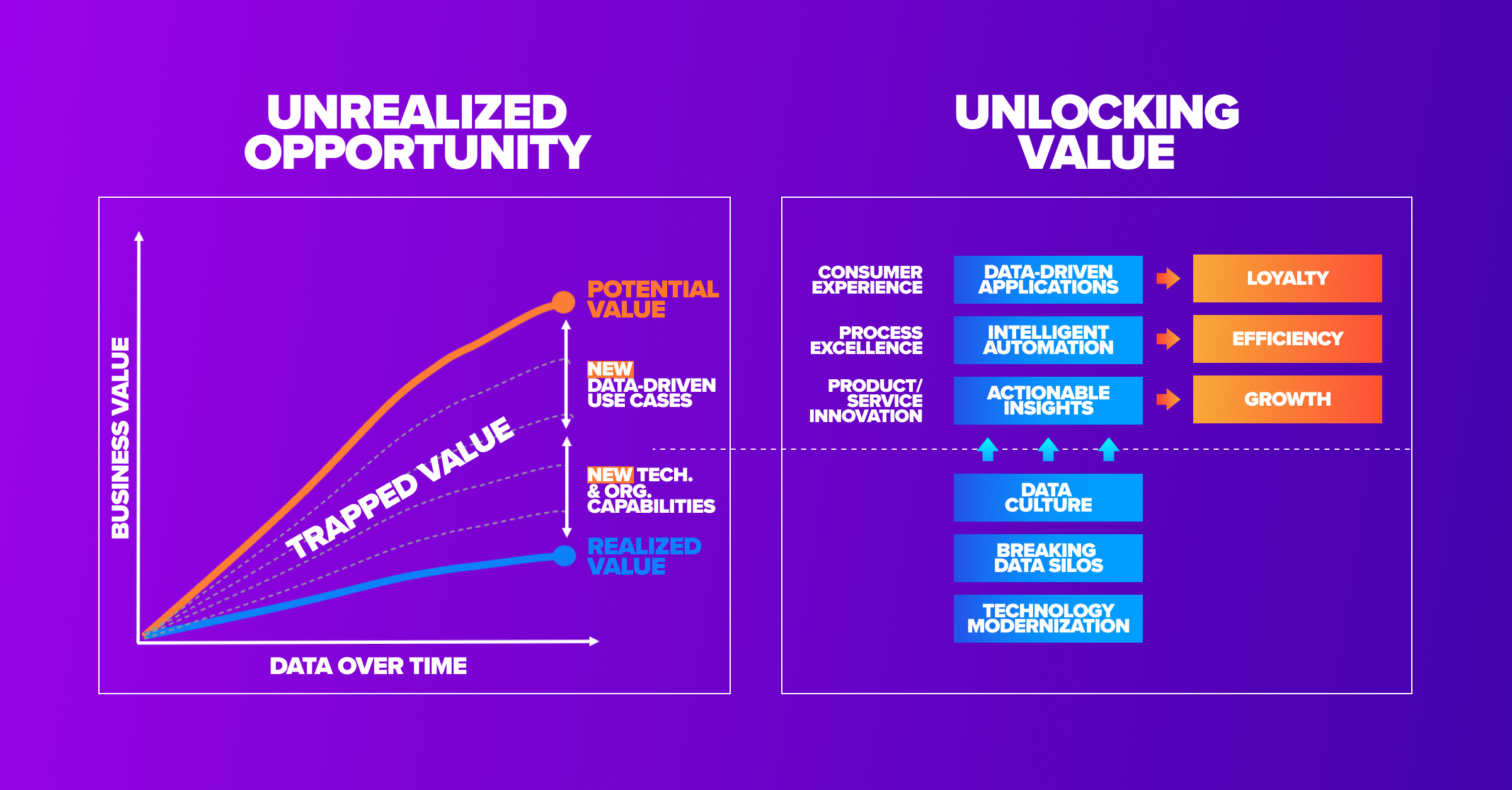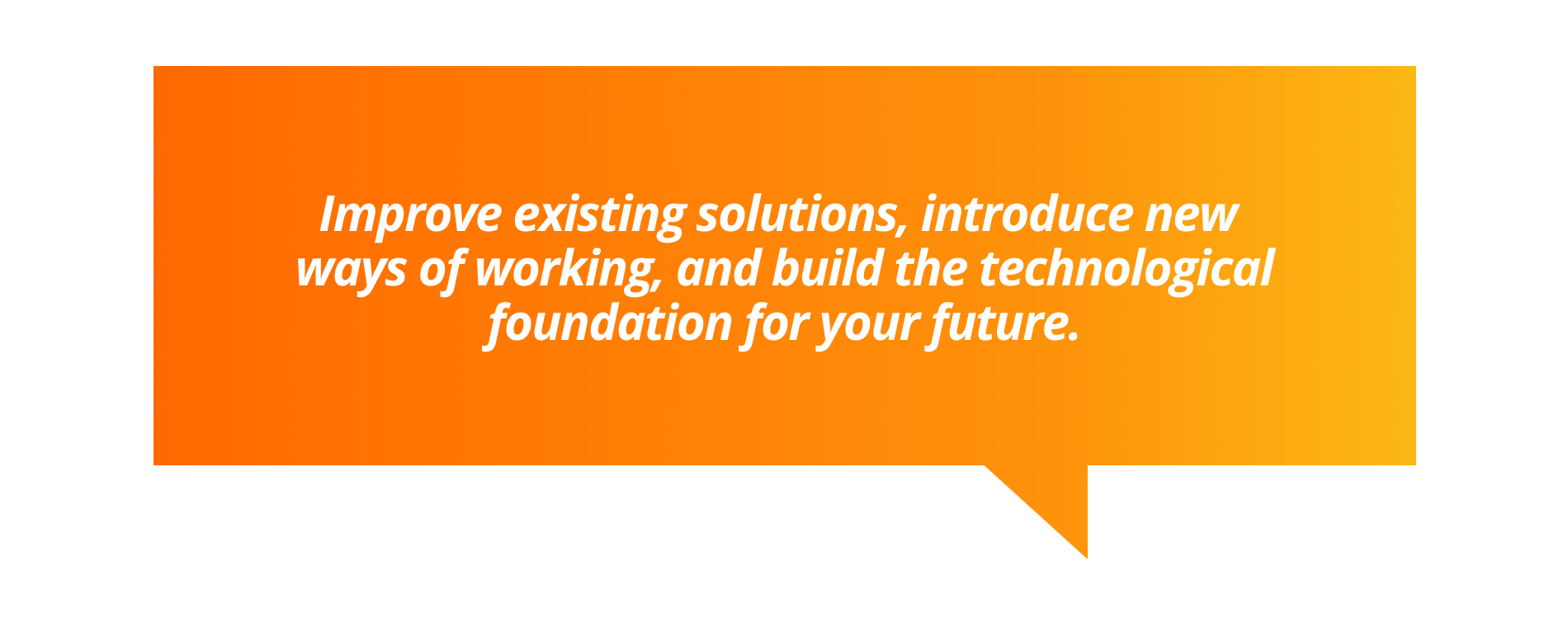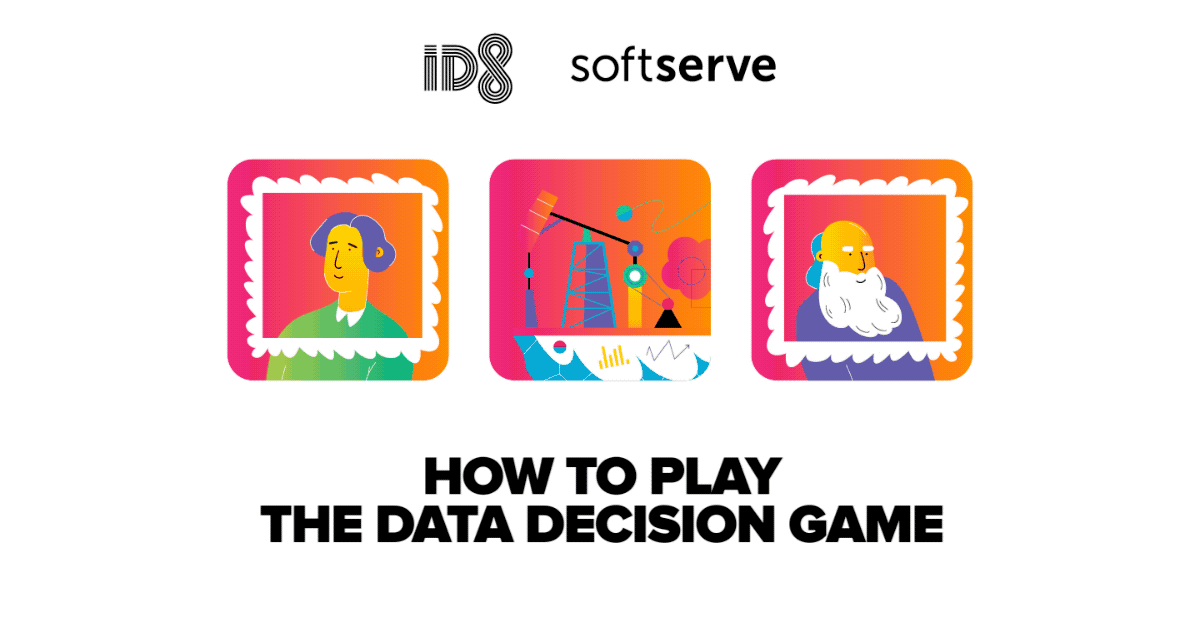What is data strategy? Business strategy and organizational objectives define key drivers for any initiative, while data strategy defines how to unlock business value from data and materialize opportunities.
For instance, data strategy defines how to extract customer insights from data and run effective marketing campaigns leveraging customer insights. It’s not unreasonable that these insights could lead to an increase in marketing funnel conversion rate, leading to an increase in revenue.

Business value is generated by defining the correct use cases—such as customer insights and targeted marketing strategy—but these depend heavily upon your investment into building organizational and technological capabilities. If the quality of your data platform doesn’t provide support for your use cases, you’ll have challenges like slower time to market because of the volume of manual work required by your staff.
Most organizations have some in-house capabilities to extract value from data (realized value). On average, however, up to 73% of all enterprise data goes unused for insights. Comprehensive data strategy is intended to optimize and implement, 1) existing and new business use cases and 2) technological and organizational capabilities in order to maximize business value from data (potential value).

With unlocking value as the ultimate benefit in mind, let’s take a quick look at what the right business case and supporting technological capabilities can deliver.
Unlocking Data Value
Actionable insights empower your employees with analytics and fuel decision-making. This, in turn, drives product and services innovation, accelerates business, and generates more revenue. Examples of actionable insights include customer insights, financial dashboards, and demand forecasting.
Intelligent automation focuses on process efficiency. Value is gained through optimizing maintenance costs and leveraging algorithms to eliminate manual, error-prone tasks or even outperform humans. Good examples of Intelligent Automation are predictive maintenance, visual inspection, algorithmic trading, or service automation with chatbots.
Data-driven applications empower consumers and provide a comprehensive experience, increasing loyalty and generating more revenue. The retail industry uses data-driven and machine learning-driven recommendations and personalization to improve the customer shopping experience.
In the above image, we’ve visualized the trapped value dilemma and what unlocking this value (via proper data-driven strategy, business use cases and capabilities) may lead to.
Maximizing Benefits
Interdependencies between technological and organizational aspects add complexity to the question of data value. That’s why some organizations use the term “data ecosystem,” which provides a better description of the concept. In order to keep it simple, there are three key pillars of a modern data ecosystem:
Data Culture. We define this to include: data democratization and governance, user experience, skills, knowledge, the decision-making lifecycle, and other organizational aspects. Data culture is a more viable and humanized term than data governance, which largely speaks to data management, quality, authority, and control associated with the data consumption process.
Breaking Data Silos. Data silos keep businesses from realizing data’s true potential while increasing storage costs. Breaking data silos requires integrating business functions, consolidating data assets, and defining single point of truth.
Technology Modernization. Technology modernization enables self-service, optimizes costs, and accelerates time to market by leveraging big data analytics, cloud capabilities, machine learning and artificial intelligence, IoT, and robotics.

Game On!
To take the concept of data strategy from theory to best practice—we've created a game to show data decision-makers how to build a modern, data-driven culture.
The game challenges you to become data-driven by selecting choices based on real-life scenarios and to see how decisions make an impact on your business’s bottom line and where you could have made better choices to increase ROI.
Here are answers to the most common questions we’ve received about our game:
What will I gain from playing the SoftServe Data Strategy game?
Our game offers reasoning for each strategic choice, and you’ll receive a summary scorecard at the end to understand how choices impact your organization’s data future. Most importantly, you’ll learn what could have been done differently to increase your data strategy value.
How do I play the SoftServe Data Strategy game?
Enter your name and begin making important decisions that will put your strategy into action! There’s no data science degree required.
Play at your own pace, stress free. Each phase and option include a brief description, so you’ll know exactly what kind of decision you’re committing to.
...Or, even better, play the game with a few of your colleagues and one of our Intelligent Enterprise subject matter experts (SMEs) will serve as your game master!
Groups of four and allowing 1-2 hours for playtime with Q&A are ideal for getting the most from your gaming.)
What does it cost to play the SoftServe Data Strategy game?
Nothing. Nada. Zilch.
OK, technically it does require your time to play it (and that’s extremely valuable), but we made the game as an educational and training tool for your edification, and to start the right data strategy conversation with you.
Want to know more before starting? More answers await you here.
If you’re ready to get your game on, let’s play!


